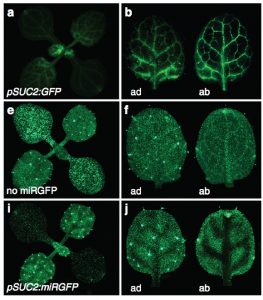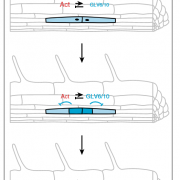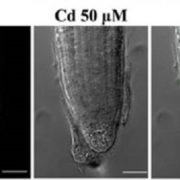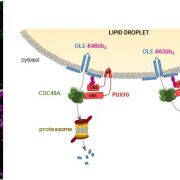Gating of miRNA movement at defined cell-cell interfaces governs their impact as positional signals

Small RNAs constitute a unique signal transduction mechanism by targeting specific mRNAs and causing a direct down-regulation of target gene expression. Mobile RNAs are known to act as positional cues in developing tissues or to signal stress responses at the systemic level. Although plasmodesmata serve as miRNA gateways in cell-to-cell movement, we know very little about how this movement is regulated. Skopelitis et al., show that the mobility of small RNAs is regulated by a mechanism sensitive to cell polarity, distinct from the one controlling protein movement. The team used miRGFP sensor system, where tissue-specific expression of miRGFP silences expression of a ubiquitous GFP reporter. The small RNAs were observed to move between cells within a functional domain of the meristem, but not between the domains. Interestingly, the movement of miRNAs in the root meristem was observed between more determined cells, but miRNAs did not move in or out of the quiescent center. The work by Skopelitis et al., provides a framework for future quest in identification of factors controlling polar transport of miRNAs. (Summary by Magdalena Julkowska) Nature Comms. 10.1038/s41467-018-05571-0









